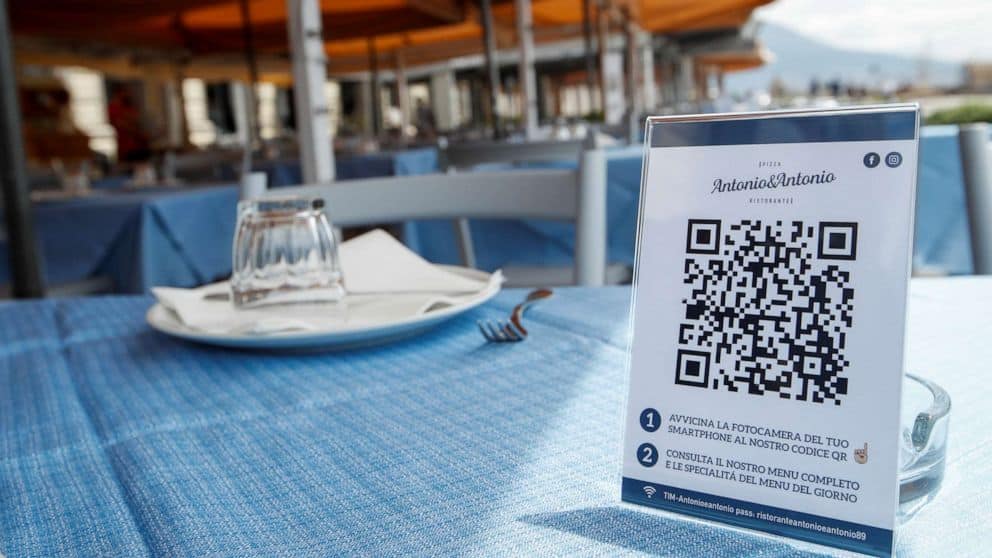QR Codes have taken over the cities. It’s hard to walk a block without seeing them. Stores, bars, posts, and even turnstiles have adopted the technology.
They are practical and friendly. Pointing the cell phone camera to perform an action seems like a present from the future, but the quick response codes are not a new invention.
They were created in 1994, but until a few years ago, they only fulfilled specific roles, such as marketing campaigns.
It didn’t look like they would take over everyday life. The pandemic changed the scenario. Fear of the transmission of covid-19 by surfaces caused cash to be avoided and changed the way bars and restaurants operate.

Even after it was found that contamination from surfaces is negligible compared to air, QR Codes remain part of the city landscape.
The debut of the Pix and the digitalization that accompanied the government’s benefits boosted the use of QR Codes as a means of payment, says Willer Marcondes, partner of the consulting and auditing firm PwC Brazil.
Loved or not, they should stay and spread further. According to a study by PwC, digital payments, such as the cell phone approach and QR Codes, should grow by 80% worldwide by 2025.
By 2030, the number of cashless transactions per capita will triple the current level.
In Brazil, the number of Pix transactions using QR Codes in August this year represented 17% of the total, adding the Dynamic and Static categories. In 2021, it was 7%.
They have become so popular that they are used even to steal money and data.
“This simplicity that technology brings, of being able with any cell phone to identify a recipient and make a payment, explains this growth,” says Marcondes.
But while QR Codes are well accepted as a means of payment, the same is not true for the disappearance of menus in bars and restaurants, which are now replaced by little squares.
On social networks, it is common to see posts about this type of use of technology. Few of them are flattering.
“The inventor of the QR Code must feel the same way Santos Dumont felt when he saw the airplane being used as a weapon in the war. It must be sad to see his invention being used for evil, such as replacing the physical menu in restaurants,” joked one user on Twitter.
The dissatisfaction comes from the inconvenience of picking up the cell phone during a meal, centering the code on the camera like target practice, and searching for dishes and drinks like an Amazon purchase.
Also, when they are offered, many digital menus are unintuitive.
Goomer, a company that offers digital solutions for establishments, says the adoption of QR Codes stalled almost a year ago.
“Demand grew greatly during the pandemic due to the need to not transition physical menus between customers. However, the experience was compromised and somewhat discredited, as a good experience was not always offered,” said Breno Nogueira, marketing director at Goomer.
“Now, we see other products replacing the code, such as the tablet on the table. The goal is no longer to distance people, but to improve service, increase the average order ticket, and increase operational efficiency, freeing up waiters for other functions,” observed Nogueira.
For Paulo Solmucci, president of Abrasel (Brazilian Association of Bars and Restaurants), establishments must offer a good digital menu – as opposed to a PDF file or photo – and a physical menu for those who prefer it.
“The introduction of the QR Code, automation, and digitalization in the sector was very positive. But when the restaurant insists on having only technology, it generates a lot of discomfort for many customers. Mainly for those who don’t like it or have difficulty,” he said.
Today, the advantage of digital menus is linked to savings on printing costs and the possibility of immediate changes in prices and products, which is important in a scenario of rising food prices.
Accessibility is also a vital issue for the unwillingness to use digital menus. While restaurants whose target audience is younger have a better chance of success with the introduction, those that cover many age groups risk just driving away new customers.
That is because accessing a QR Code requires, in addition to goodwill, familiarity with the technology, a compatible cell phone, and stable internet—a series of prerequisites that make eating out more bureaucratic.
“It is a trend in unpretentious places that charge cheaply. In more sophisticated places, which have a higher average ticket, it sounds more like silliness. This can drive away the customer, who wants to pay more for a full experience,” says Ian Olivier of The Antigourmet Critic’s Instagram profile.
“One of the things that most people complain about in restaurants is that people stay on their cell phones a lot and not socializing, talking. The QR Code ends up being an incentive for this kind of situation.
“You open the menu on your cell phone, and a bunch of notifications appears. So instead of detaching a little from your daily life and enjoying that moment, you return to the real world”.
With information from Valor Econômico

